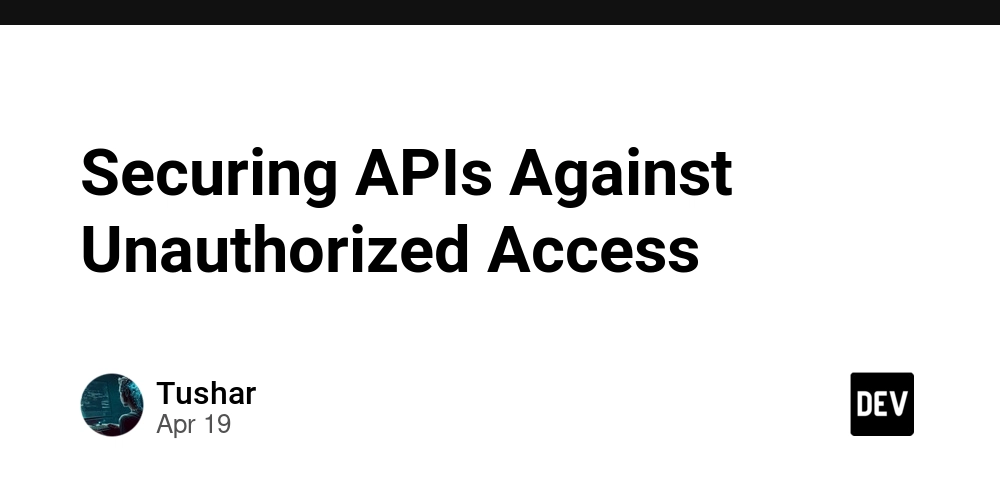How to Use HTTP/3 and QUIC for Faster, Secure Web Applications
HTTP/3 is the latest evolution of the HyperText Transfer Protocol, built on top of the QUIC transport protocol. Unlike HTTP/2, which relies on TCP, HTTP/3 uses UDP to reduce latency, improve connection reliability, and support modern networking requirements. In this guide, you'll learn how to enable HTTP/3 in your application, test it, and understand its benefits. What Is QUIC? QUIC (Quick UDP Internet Connections) is a transport layer network protocol developed by Google. It incorporates TLS 1.3 for encryption and multiplexed connections over UDP instead of TCP. HTTP/3 is built on QUIC, replacing HTTP/2’s TCP foundation. Why Use HTTP/3? Zero Round-Trip Time (0-RTT): Faster handshakes mean faster connections. Built-in Encryption: Always uses TLS 1.3. Multiplexing without Head-of-Line Blocking: Streams don’t interfere with each other. Better Performance on Mobile Networks: Especially during packet loss or switching networks. Step 1: Check Browser and Server Support Modern versions of Chrome, Firefox, Edge, and Safari support HTTP/3. On the server side, you’ll need a compatible stack like: Nginx with QUIC patch Caddy (HTTP/3 enabled by default) LiteSpeed Cloudflare edge services Step 2: Enable HTTP/3 in Caddy (Example) If you're using Caddy, enabling HTTP/3 is straightforward: example.com { root * /var/www/html file_server tls you@example.com } HTTP/3 is enabled automatically when using HTTPS with Caddy 2.5+ Step 3: Test HTTP/3 Use the browser dev tools (Network tab) or the command line: curl -I --http3 https://example.com If HTTP/3 is working, you’ll see a response using the HTTP/3 protocol version. Optional: Enable in Nginx (Advanced) To use HTTP/3 in Nginx, you’ll need to build from source with the QUIC patch or use a supported fork. Example config: listen 443 quic reuseport; http3_max_concurrent_streams 128; ssl_protocols TLSv1.3; ssl_prefer_server_ciphers off; add_header Alt-Svc 'h3=":443"'; Step 4: Monitor and Analyze Use tools like KeyCDN HTTP/2 and HTTP/3 test to validate the protocol status. You can also use Wireshark to see QUIC packets on UDP port 443. Conclusion Adopting HTTP/3 today sets you up for faster, more secure applications with better resilience on poor networks. Whether you serve static sites or dynamic APIs, HTTP/3 can make a noticeable difference in performance and user experience. If you found this helpful, consider supporting me: buymeacoffee.com/hexshift

HTTP/3 is the latest evolution of the HyperText Transfer Protocol, built on top of the QUIC transport protocol. Unlike HTTP/2, which relies on TCP, HTTP/3 uses UDP to reduce latency, improve connection reliability, and support modern networking requirements. In this guide, you'll learn how to enable HTTP/3 in your application, test it, and understand its benefits.
What Is QUIC?
QUIC (Quick UDP Internet Connections) is a transport layer network protocol developed by Google. It incorporates TLS 1.3 for encryption and multiplexed connections over UDP instead of TCP. HTTP/3 is built on QUIC, replacing HTTP/2’s TCP foundation.
Why Use HTTP/3?
- Zero Round-Trip Time (0-RTT): Faster handshakes mean faster connections.
- Built-in Encryption: Always uses TLS 1.3.
- Multiplexing without Head-of-Line Blocking: Streams don’t interfere with each other.
- Better Performance on Mobile Networks: Especially during packet loss or switching networks.
Step 1: Check Browser and Server Support
Modern versions of Chrome, Firefox, Edge, and Safari support HTTP/3. On the server side, you’ll need a compatible stack like:
- Nginx with QUIC patch
- Caddy (HTTP/3 enabled by default)
- LiteSpeed
- Cloudflare edge services
Step 2: Enable HTTP/3 in Caddy (Example)
If you're using Caddy, enabling HTTP/3 is straightforward:
example.com {
root * /var/www/html
file_server
tls you@example.com
}HTTP/3 is enabled automatically when using HTTPS with Caddy 2.5+
Step 3: Test HTTP/3
Use the browser dev tools (Network tab) or the command line:
curl -I --http3 https://example.comIf HTTP/3 is working, you’ll see a response using the HTTP/3 protocol version.
Optional: Enable in Nginx (Advanced)
To use HTTP/3 in Nginx, you’ll need to build from source with the QUIC patch or use a supported fork. Example config:
listen 443 quic reuseport;
http3_max_concurrent_streams 128;
ssl_protocols TLSv1.3;
ssl_prefer_server_ciphers off;
add_header Alt-Svc 'h3=":443"';Step 4: Monitor and Analyze
Use tools like KeyCDN HTTP/2 and HTTP/3 test to validate the protocol status. You can also use Wireshark to see QUIC packets on UDP port 443.
Conclusion
Adopting HTTP/3 today sets you up for faster, more secure applications with better resilience on poor networks. Whether you serve static sites or dynamic APIs, HTTP/3 can make a noticeable difference in performance and user experience.
If you found this helpful, consider supporting me: buymeacoffee.com/hexshift





























![[Webinar] AI Is Already Inside Your SaaS Stack — Learn How to Prevent the Next Silent Breach](https://blogger.googleusercontent.com/img/b/R29vZ2xl/AVvXsEiOWn65wd33dg2uO99NrtKbpYLfcepwOLidQDMls0HXKlA91k6HURluRA4WXgJRAZldEe1VReMQZyyYt1PgnoAn5JPpILsWlXIzmrBSs_TBoyPwO7hZrWouBg2-O3mdeoeSGY-l9_bsZB7vbpKjTSvG93zNytjxgTaMPqo9iq9Z5pGa05CJOs9uXpwHFT4/s1600/ai-cyber.jpg?#)










































































































































![[The AI Show Episode 144]: ChatGPT’s New Memory, Shopify CEO’s Leaked “AI First” Memo, Google Cloud Next Releases, o3 and o4-mini Coming Soon & Llama 4’s Rocky Launch](https://www.marketingaiinstitute.com/hubfs/ep%20144%20cover.png)





























































































































![[FREE EBOOKS] Machine Learning Hero, AI-Assisted Programming for Web and Machine Learning & Four More Best Selling Titles](https://www.javacodegeeks.com/wp-content/uploads/2012/12/jcg-logo.jpg)








































































![Rogue Company Elite tier list of best characters [April 2025]](https://media.pocketgamer.com/artwork/na-33136-1657102075/rogue-company-ios-android-tier-cover.jpg?#)








































































_Andreas_Prott_Alamy.jpg?width=1280&auto=webp&quality=80&disable=upscale#)






























































































![What’s new in Android’s April 2025 Google System Updates [U: 4/18]](https://i0.wp.com/9to5google.com/wp-content/uploads/sites/4/2025/01/google-play-services-3.jpg?resize=1200%2C628&quality=82&strip=all&ssl=1)










![Apple Watch Series 10 Back On Sale for $299! [Lowest Price Ever]](https://www.iclarified.com/images/news/96657/96657/96657-640.jpg)
![EU Postpones Apple App Store Fines Amid Tariff Negotiations [Report]](https://www.iclarified.com/images/news/97068/97068/97068-640.jpg)
![Apple Slips to Fifth in China's Smartphone Market with 9% Decline [Report]](https://www.iclarified.com/images/news/97065/97065/97065-640.jpg)




































































































































